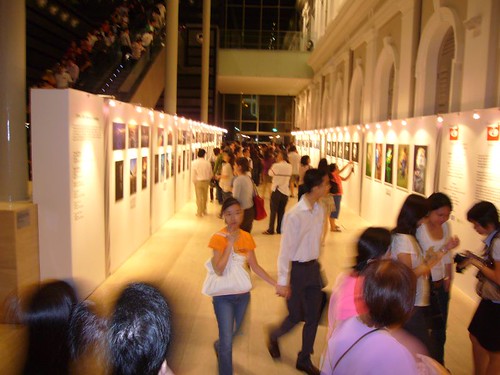
NHB’s Night Festival 2008
I love reading Nina Simon’s Museum 2.0 blog for her cutting insights on stuff happening in my neck of the woods. One of the issues that she recently wrote about – audience development – is something that museums and art galleries in Singapore are also grappling with.
In her post, Nina questioned the need for museums to organise “hip” events to attract younger audiences at the expense of alienating a broader more diverse crowd. While many museums have shifted from being a “cabinet of curiosities” for an elite few to “community destinations”, the question now arises whether their activities should be narrowly focused on distinct segments or appeal more broadly across visitor groups.



